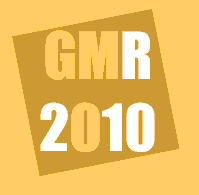UNAIDS IATT on Education meeting with UNGEI leads to recommendations for the EFA Working Group

- © UNESCO
On Tuesday 8 December 2009 the UNAIDS IATT on Education held a joint meeting with the UN Girls’ Education Initiative at UNESCO HQ in Paris.
The meeting, which was held in advance of the Education For All Working Group meeting had as its objectives to:
1. Review the outcomes of a joint analysis commissioned by the IATT on Education in collaboration with UNGEI to examine the attention to equity and inclusion issues in the 2010 Education for All (EFA) Global Monitoring Report.
2. Develop a strategy for influencing the EFA Working Group meetings, including coming to agreement on key messages and recommendations.
Overall the analysis found that – on some aspects the 2010 GMR Team – is to be commended.
For example, the report:
• Focuses well on the critical theme of marginalization;
• Highlights gender equity concerns better than in past reports;
• Presents linkages between child and maternal health, early childhood care and education, enrolment, completion and achievement;
• Focuses on young adults and the transition from school into the next phase of their lives; and
• Represents a great step forward in the treatment of gender equity and poverty dimensions of exclusion.
However, the analysis also found that:
• The conceptual framework needed further debate – and that the concept of social exclusion might have worked better as a guiding framework
• There was a limited analysis of the interaction between different forces, influences and conditions that create a ‘system’ of exclusion
• HIV & AIDS and its multiple impacts is dealt with only very briefly and inadequately
• Incorporation of the marginalized into the “status quo” seen as wholly beneficial, with limited critique of education systems themselves
• Mobilization of communities and civil society organizations deserves more attention as do cultural issues in exclusion
• Financing aspects are much emphasised – but are they a central concern or one of a cluster of interrelated concerns?
• Political will and commitment are encouraged, but how can this be enhanced? What strategies can the EFA movement employ?
• The newly-introduced Deprivation and Marginalization in Education (DME) data set Index masks regional and intraregional differences, and that greater disaggregation of statistics would help nuance the analysis and possible solutions
• Better and broader sources of information are necessary
• If ‘business as usual’ is to be avoided the GMR needs to indicate where successful alternatives may be found
The meeting resulted in a series of recommendations which will be presented to the EFA Working Group (click here for the recommendations and here for the above-mentioend analysis).
At this critical juncture of five years before the 2015 target date for EFA, the EFA Working Group meeting is a critical opportunity to review partners’ efforts to support the achievement of EFA; identify urgent and important issues that require further attention; and make policy recommendations for review by the High-Level Group (HLG) on EFA.
The High-Level Group on EFA (HLG) which will take place Addis Ababa, 23-25 February, 2010 serves as a lever for political commitment and technical and financial resource mobilization for EFA.
- Author(s):UNESCO
- Source:UNESCO
- 11-12-2009


